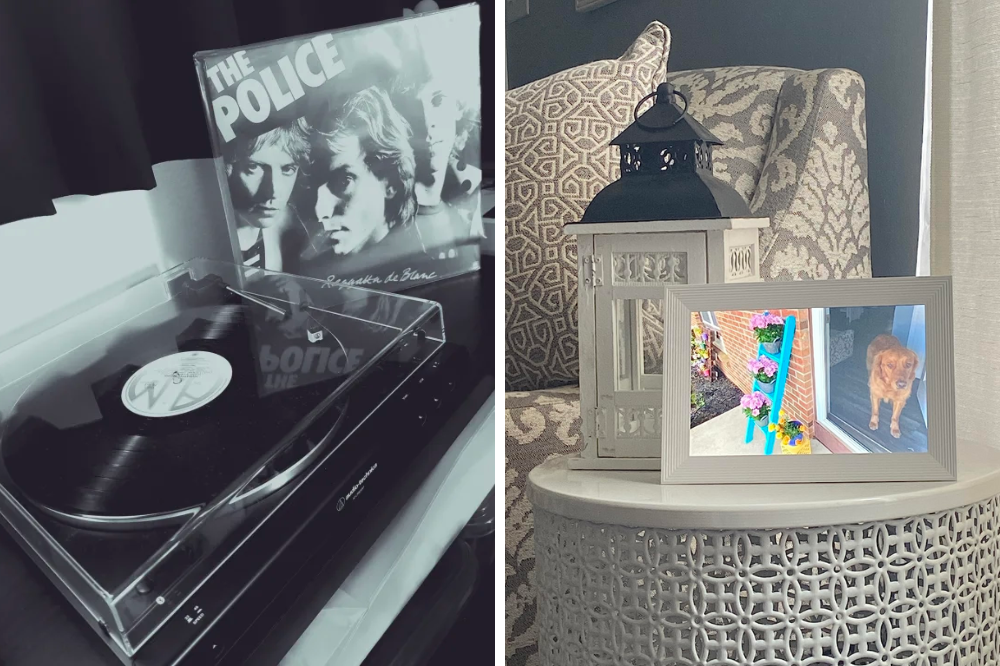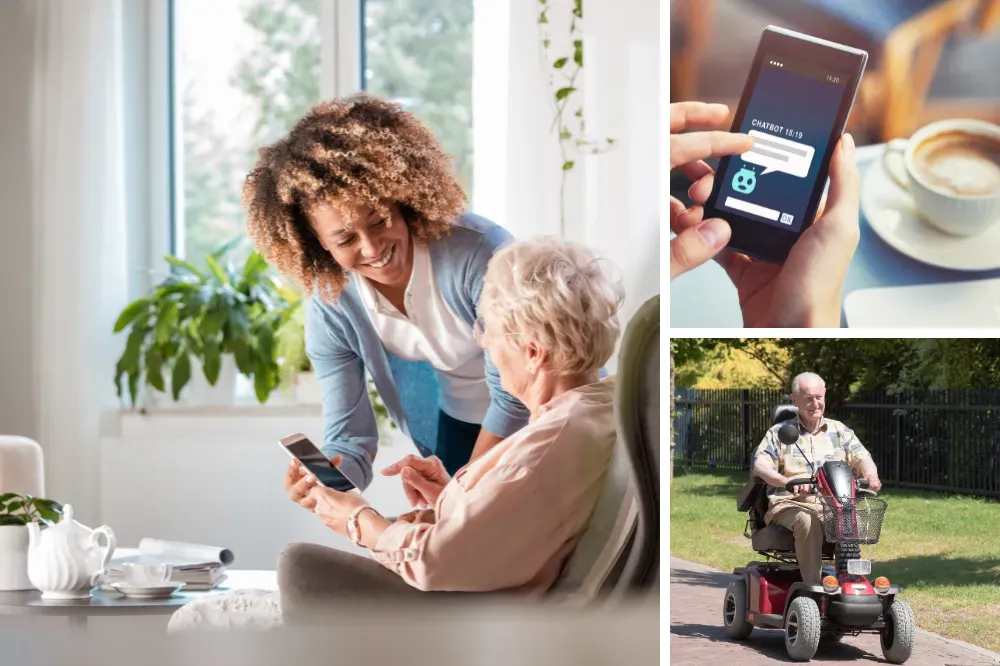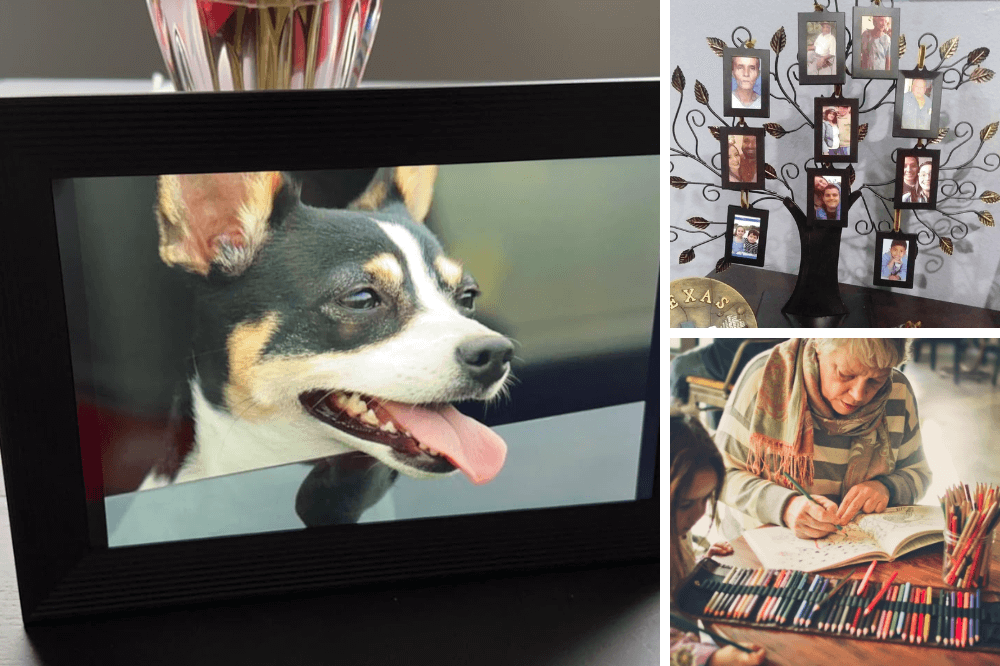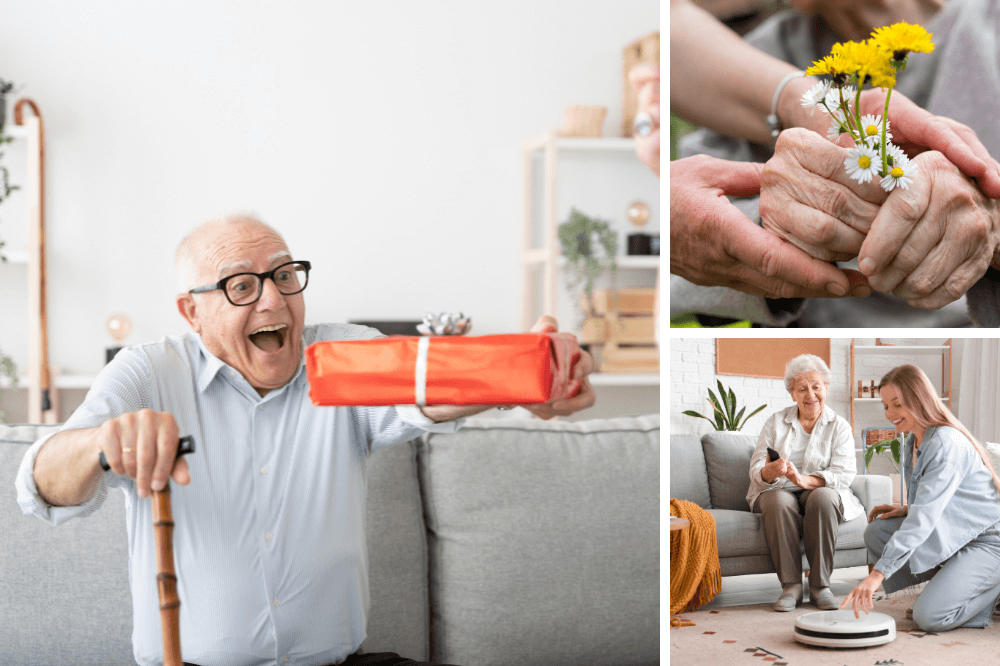Home automation for seniors is a transformative solution that enhances safety, convenience, and comfort, allowing older adults to maintain independence and improve their quality of life. Controlling smart home devices using various methods, such as smartphone apps and smart hubs like Alexa, can further enhance this convenience. Aging in place is a key concept, where smart home technology supports seniors in remaining in their homes safely and comfortably. Smart home technology offers a wide range of smart devices that can simplify daily tasks, monitor health, and provide peace of mind to both seniors and their family members. This article explores the various benefits of smart home devices, such as smart lighting, voice assistants, and automated appliances, and provides comprehensive setup tips for creating an effective smart home environment tailored to the needs of elderly homeowners.

Benefits of Smart Home Technology for Seniors
1. Increased Safety and Security
Safety is a top priority for seniors, particularly those living alone. Home automation systems incorporate various smart devices, such as smart locks, security cameras, motion sensors, and security systems, to enhance security and provide a safer living environment. These systems allow users to control smart home devices through smartphone apps and smart hubs, making it easier to manage smart locks and security systems effectively.
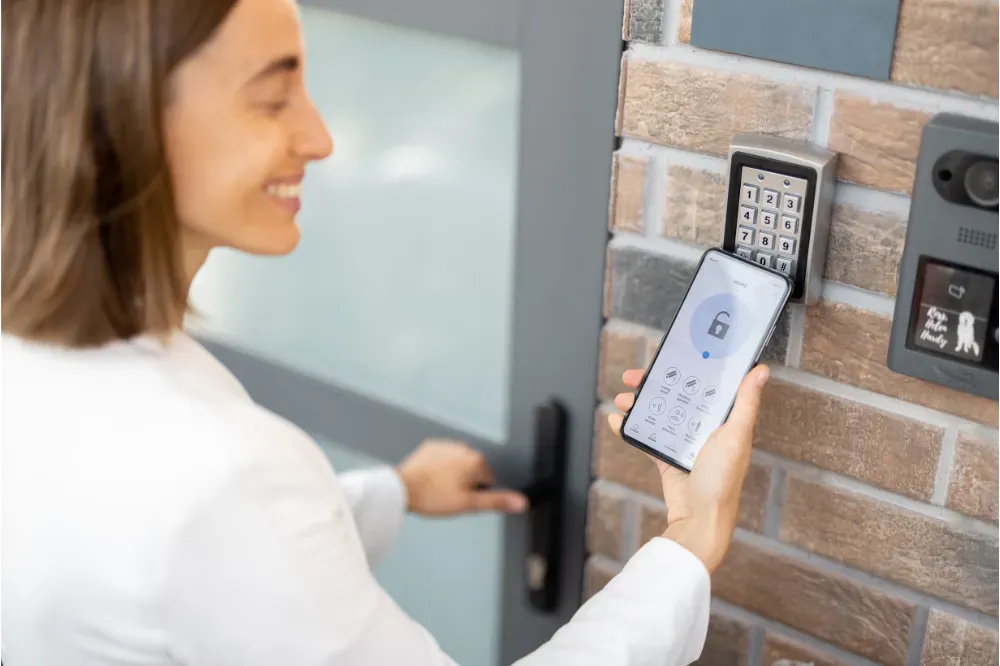
Smart Locks: Smart door locks enable seniors to lock and unlock their doors remotely using a smartphone app, ensuring that their home remains secure even if they forget to lock the door when leaving. This feature is particularly beneficial for seniors with memory challenges or reduced dexterity, as it eliminates the need for physical keys and simplifies access control.
Security Cameras: Smart security cameras, equipped with high-resolution video capabilities and motion detection, provide real-time monitoring of the home. These cameras can send alerts to the homeowner's smartphone or to designated family members if unusual activity is detected, allowing for quick response in case of potential security threats.
Motion Sensors: Motion sensors are an essential component of a smart security system, enhancing safety by detecting movement within the home and around its perimeter. When integrated with smart lighting, these sensors can automatically illuminate areas when motion is detected, which not only deters potential intruders but also reduces the risk of falls by ensuring well-lit pathways, especially at night.
Smart Doorbells: Smart doorbells are another valuable addition to home security, particularly for seniors. These devices feature built-in cameras and microphones, allowing residents to see and communicate with visitors at their doorstep without having to open the door. This can be particularly reassuring for seniors, as it enables them to screen visitors safely. Smart doorbells can also record video footage when someone approaches the door, providing valuable evidence in case of suspicious activity or break-ins.

In addition to these benefits, many smart doorbells offer the following features:
- Motion Detection Alerts: Similar to security cameras, smart doorbells can detect motion and send alerts to the homeowner's smartphone, notifying them of any activity near their entrance.
- Two-Way Audio: This feature allows seniors to speak directly with visitors, delivery personnel, or anyone else at their door, without having to open it. This adds an extra layer of security and convenience, especially for individuals with mobility issues.
- Integration with Other Smart Devices: Smart doorbells can be integrated with other smart home systems, such as smart lights and security cameras, to create a comprehensive security network. For example, if the doorbell detects motion, it can trigger the lights to turn on or initiate video recording on nearby cameras.
- Video Recording and Playback: Most smart doorbells offer cloud storage or local storage options for video recordings, allowing homeowners to review footage if needed. This feature is particularly useful for monitoring package deliveries or investigating security incidents.
2. Convenience and Ease of Use
Smart home technology significantly simplifies daily tasks, making life more convenient and accessible for seniors through features like voice command. Seniors can control smart home devices using smartphone apps and smart hubs like Alexa, enhancing convenience and accessibility. The use of smart devices, such as smart lights, smart plugs, and smart speakers, allows for seamless control of various home functions.

Smart Lights and Smart Light Bulbs: Smart lighting systems enable seniors to control lights throughout their homes using voice commands, smartphone apps, or preset schedules. This technology can reduce energy consumption and enhance security by simulating occupancy when the house is empty. Additionally, smart lights can be programmed to gradually brighten in the morning, providing a gentle wake-up experience, or to dim in the evening, promoting better sleep hygiene.
Smart Plugs: Smart plugs convert ordinary appliances into smart devices, allowing seniors to control them remotely. For example, a smart plug can be used to turn on a coffee maker or to shut off a space heater, ensuring that appliances are used safely and efficiently.
Smart Speakers and Voice Assistants: Devices like Amazon Echo and Google Home, equipped with voice assistants,provide a hands-free way for seniors to control smart home devices, access information, and enjoy entertainment. These smart speakers can respond to simple voice commands to play music, check the weather, set reminders, and even make phone calls. For seniors, this technology not only simplifies daily tasks but also enhances accessibility, making it easier to stay connected and informed.

3. Health and Wellness Monitoring with Smart Pill Dispensers
Maintaining health and wellness is crucial for seniors, and smart technology can play a vital role in supporting these goals. From smart medication dispensers to smart health monitors, these devices provide essential tools for health management. Additionally, controlling smart home devices can contribute to a healthier living environment by managing smart thermostats and environmental sensors.
Smart Medication Dispensers: Smart pill dispensers help seniors manage their medication schedules by providing timely reminders and dispensing the correct dosage. These devices can prevent medication errors and ensure adherence to prescribed treatment plans. Some models also notify family members or caregivers if a dose is missed, allowing for timely intervention.
Health Monitoring Devices: Smart health monitors, such as smart scales, blood pressure monitors, and wearable fitness trackers, provide real-time data on vital signs and physical activity. These devices can track metrics such as heart rate, blood pressure, and sleep patterns, helping seniors and their healthcare providers monitor health trends and make informed decisions.
Smart Thermostats and Environmental Sensors: Smart thermostats can be programmed to maintain comfortable temperatures, helping seniors avoid the health risks associated with extreme temperatures. Environmental sensors, such as smart smoke detectors and carbon monoxide detectors, enhance safety by providing alerts in case of fire or hazardous gas leaks.
4. Social Connectivity and Entertainment
Isolation can be a significant challenge for seniors, especially those living alone. Many smart devices enhance social connectivity and provide entertainment, reducing feelings of loneliness and improving mental well-being. Additionally, controlling smart home devices can further enhance social connectivity and entertainment options, making it easier for seniors to manage their environment and stay engaged.

Video Calling and Messaging: Smart displays and speakers with video calling capabilities allow seniors to easily connect with family members and friends. These devices, which can be activated through simple voice commands, make it easier for seniors to stay in touch with loved ones, fostering a sense of connection and community.
Smart TVs and Entertainment Systems: Smart TVs and streaming devices provide access to a wide range of entertainment options, including movies, music, and news. These systems can be controlled using a remote or voice commands, making them accessible even for those with limited mobility or dexterity.
Voice Assistants for Social Interaction: Voice assistants can provide companionship by engaging in conversation, playing games, or sharing daily news updates. While not a replacement for human contact, these interactions can help alleviate feelings of loneliness and provide mental stimulation. Additionally, voice assistants can remind seniors of important dates, facilitate hobbies such as cooking by providing recipes, and even play favorite music, all of which contribute to a more enjoyable and fulfilling daily routine.

Setting Up a Smart Home for Seniors
Creating a smart home environment that meets the unique needs of seniors involves careful planning and consideration of various factors, including the selection of devices, setup, training, and ongoing support. Choosing devices that are easy to control using smartphone apps and smart hubs is crucial, as it ensures practicality and ease of use for seniors. Smart technology plays a crucial role in this process, enabling remote monitoring and control to enhance safety and independence for older adults.
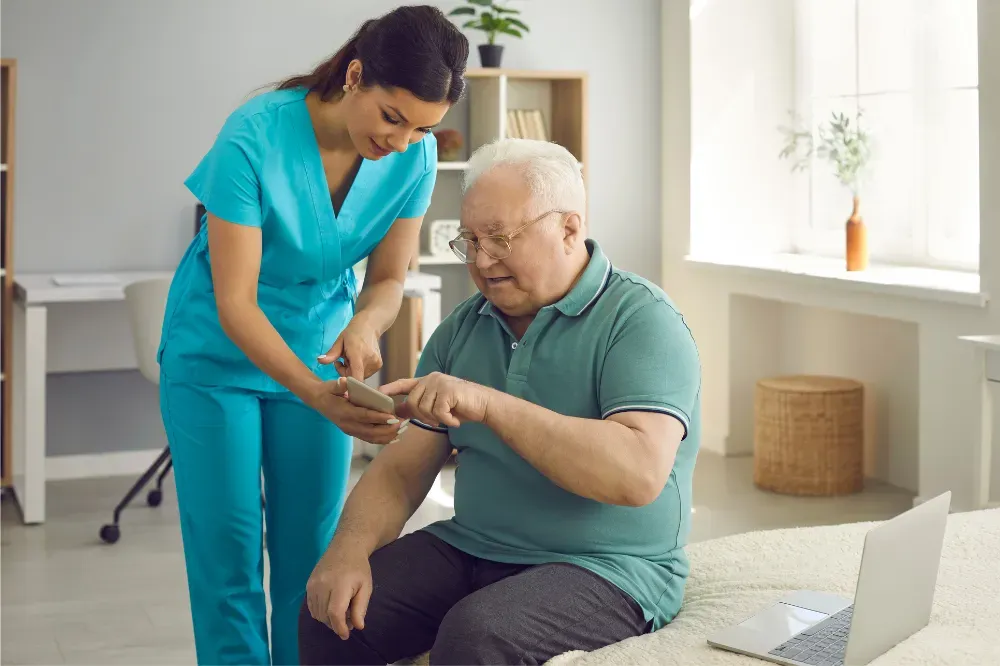
1. Choosing the Right Smart Devices
When selecting smart home devices for seniors, it's important to prioritize ease of use, reliability, and compatibility with existing systems. It is also crucial to choose devices that can be easily controlled using smartphone apps and smart hubs. Many smart devices offer significant advantages for seniors, particularly in enhancing safety and independence at home. The best smart home devices for seniors should offer intuitive interfaces, voice control capabilities, and robust customer support. Consider the following categories:
- Smart Lighting: Choose smart bulbs and switches that are easy to install and compatible with voice assistants. Look for features like adjustable brightness and color temperature, which can enhance comfort and energy efficiency.
- Smart Speakers and Displays: Select devices with clear audio and easy-to-use voice commands. Smart displays with video calling capabilities can enhance social connectivity, while smart speakers can serve as a central hub for controlling other smart devices.
- Health and Wellness Devices: Opt for smart medication dispensers with user-friendly interfaces and reliable alert systems. Consider health monitors that provide comprehensive data tracking and easy access to health metrics.
- Security and Safety Systems: Choose smart locks, cameras, and sensors that offer reliable security features and integration with other smart home technologies. Look for systems that provide real-time alerts and remote monitoring capabilities.
2. Setting Up and Connecting Devices
The setup process for smart home devices typically involves connecting the devices to a Wi-Fi network and linking them to a smart home hub or smartphone app. To control smart home devices, users can utilize smartphone apps and smart hubs like Alexa, which offer practical and versatile options for device management. It's important to follow the manufacturer's instructions carefully and ensure that all devices are configured correctly for optimal performance.
Integrating security systems, such as entry sensors and motion detectors, is crucial for enhancing safety and peace of mind, especially for seniors and their caregivers.
Smart Home Hubs and Apps: A smart home hub, such as Google Nest or Amazon Echo, serves as the central control point for all connected devices. Seniors can use a hub or app to manage their smart home ecosystem, set schedules, and receive alerts.
Integration and Compatibility: Ensure that all devices are compatible with the chosen smart home hub and each other. Compatibility is crucial for seamless operation and integration of features, such as using a smart speaker to control smart lights or a thermostat.
Connectivity and Network Considerations: A strong and reliable Wi-Fi connection is essential for the proper functioning of smart home devices. Consider placing the Wi-Fi router centrally or using range extenders to ensure good coverage throughout the home.

3. Training and Support
Introducing new technology to seniors requires patience and support. Provide thorough training on how to use each device, including basic functions, voice commands, and troubleshooting tips. It is crucial to train seniors on how to control smart home devices using smartphone apps and smart hubs, as these methods offer practical and versatile options for device management.
Smart home tech can greatly enhance the lives of older adults by providing user-friendly interfaces and support, making it easier for them to live independently and for family members to monitor their well-being.
Hands-On Demonstrations: Start with a hands-on demonstration of each device, showing how to use the smartphone app, issue voice commands, and access various features. Encourage seniors to practice using the devices and offer reassurance as they become more comfortable with the technology.
Addressing Privacy and Security Concerns: Educate seniors about the importance of online security and privacy. Discuss how personal information is used and protected, and explain the measures in place to secure smart devices from unauthorized access.
Ongoing Support and Maintenance: Regularly check in with seniors to address any issues or concerns they may have with their smart home devices. Provide assistance with software updates, troubleshooting, and maintenance tasks, such as replacing batteries or updating firmware.
4. Customizing the Smart Home Experience
Each senior's needs and preferences are unique, so it's important to customize the smart home setup to suit individual lifestyles and health conditions. Controlling smart home devices can be customized to suit individual preferences and routines, whether through smartphone apps, smart hubs like Alexa, or even devices like the Apple Watch that integrate voice commands. Smart technology plays a crucial role in this customization, allowing for remote monitoring and control, enhancing seniors' safety and independence.
Personalized Settings and Schedules: Adjust settings on smart devices to align with the senior's daily routines and preferences. For example, set smart lights to gradually brighten in the morning, or program the thermostat to maintain a comfortable temperature throughout the day.
Accessibility Features: Leverage accessibility features, such as voice control and large, easy-to-read displays, to make smart home devices more user-friendly. Consider using devices with adjustable volume settings and clear audio output, especially for seniors with hearing impairments.
Monitoring and Alerts: Set up alerts and notifications to keep family members informed about the senior's well-being. For example, use motion sensors and cameras to monitor activity in key areas of the home, and configure alerts for unusual patterns, such as a missed medication dose or extended periods of inactivity.
Conclusion
Home automation for seniors provides numerous benefits, including enhanced safety, simplified daily activities, and improved overall quality of life. The ability to control smart home devices using smartphone apps and smart hubs like Alexa offers ease of use and versatility, making these technologies accessible and convenient for older people. By thoughtfully selecting and setting up smart home devices, seniors can achieve greater independence and peace of mind, while family members can rest assured about their loved ones' well-being.
Many seniors consider aging in place an important consideration, and smart home technology plays a vital role in supporting this goal. It offers solutions that address mobility challenges and health issues, enabling older adults to remain safely and comfortably in their homes.
This comprehensive guide underscores the transformative potential of smart home technology in enhancing seniors' living environments. By embracing these advancements, seniors can enjoy a higher quality of life and maintain their independence in the comfort of their own homes.

